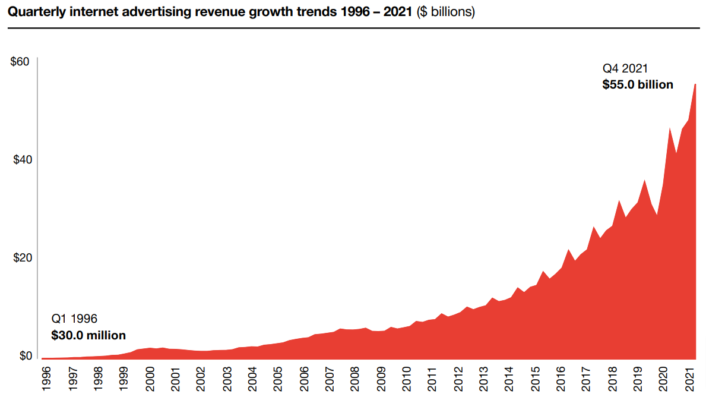Growing 45% since July 2020, TikTok reported over a billion monthly active users at the end of September 2021, with estimates showing 650,000 new users every day. Early growth on the platform was fueled by viral challenges and comedy skits, but increasingly longer form analysis is engaging audiences alongside the dancing and lip syncing.
Why TikTok matters
As with all social platforms, publishers are moving at different speeds depending on their priorities and resources. But if TikTok keeps growing at its current rate, it may become too big to ignore.
- TikTok has grown exponentially since its release in 2016. Its user base grew from 55 million in January 2018 to 271 million by December 2018. The app added another 200 million users the following year and by July 2020 was reporting almost 690 million users. Last year saw it past the 1 billion user mark.
- The short-form video sharing platform is the sixth biggest social network in the world, ranking behind Facebook, YouTube, WhatsApp, Instagram, and China’s WeChat. TikTok hit three billion downloads in July 2021, just a year after reaching the two billion downloads milestone.
- In the US, TikTok is more popular than Instagram among younger Gen Z users – born between 1997 and 2012 – with 37.3 million users versus Instagram’s 33.3 million. But usage among other demographics is also growing; in the first quarter of 2021, 36% of TikTok users were between 35 and 54 years old compared to 26% in 2020.
Content evolution
- Many online influencers became well known for documenting their lives in minute detail. While there will always be an appetite for that style of content, commentators are seeing a shift away from what a recent Vox article calls, ‘compulsive, self-entitled posting sprees’.
- Commenting in Vox on the trend for online creators to develop in-depth analysis of fashion trends and celebrity behavior, Terry Nguyen says that audiences now seem to expect a ‘value-add’ to what they consume. He describes it as:
Content that doesn’t singularly revolve around the creator, but engages with and elucidates the world…
Publishers on TikTok
This shift to more considered content on TikTok is good news for publishers who already have the skills to present analysis of their particular subject expertise.
Alessandro Bogliari, CEO of the Influencer Marketing Factory told Vox that to be successful on TikTok you just had to dance or lip-sync really well for 30 seconds. But that’s no longer enough, he says:
We’re starting to see a distinction between the creators who know how to edit and keep their audience engaged, versus those who got lucky off of TikTok’s algorithm.
Publishers looking to engage with the trend for more substantial content on TikTok should still consider the unique aesthetic of the platform. Ngyuen describes analyst creators as ‘straddling the boundaries’ of delivering an expert opinion with the bedside manner of a trusted friend.
He worries that the ‘mimetic nature’ of the platform will see TikTokers pick up the format without doing the research required to deliver meaningful analysis. Videos are already appearing that are simply verbatim readings of published articles or Wikipedia entries.
But again, this could be an opportunity for publishers; trusted brands can engage TikTok audiences hungry for more than superficial social content with properly researched analysis formatted for the platform.









